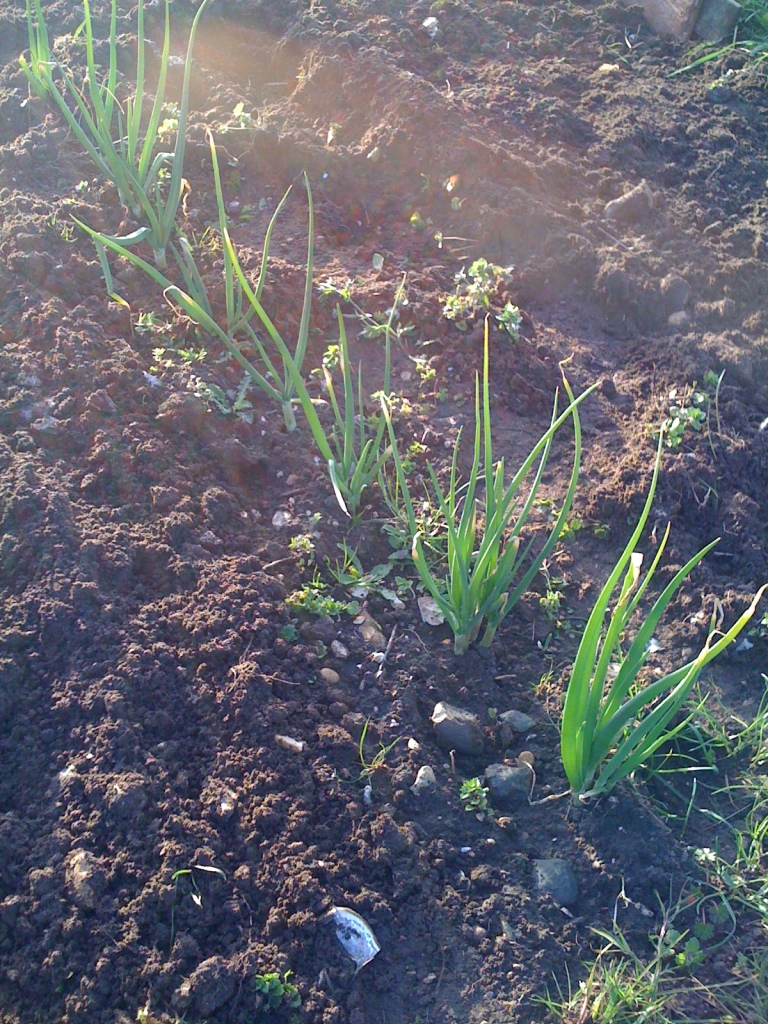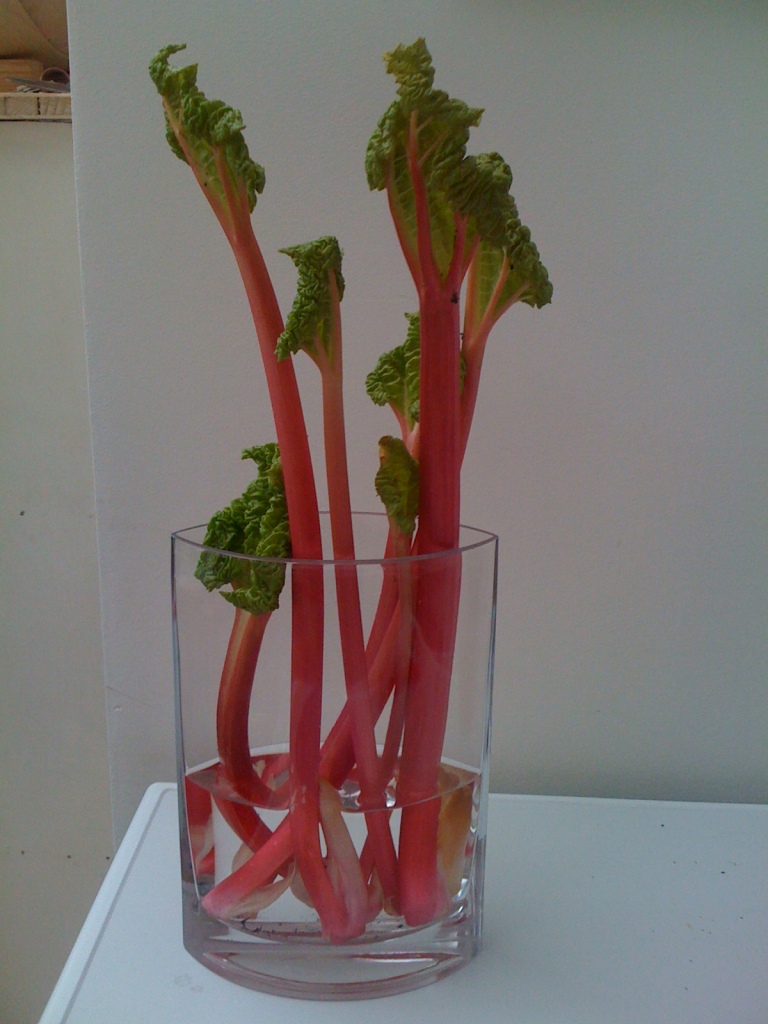When the first rhubarb comes in, it marks the start of the cropping year for us. There is something fantastically symbolic about it, because it is the first spring crop to come through on our plot. Technically there are other crops coming in all year round, but at this time of year they are mainly leftovers from the previous season.
For example, we picked the last of our sprouts and ate them on Easter Sunday. Spring onions are now cropping prolifically. Last year we were astounded by a perfect cauliflower that sprouted in March after a long, unpromising dormancy over Winter.
Rhubarb on the other hand marks the start of the growing season. It is the new season's growth that you crop and eat. Something that was lying dormant in the soil sprouts in a very short time, and provides you with an all-new crop.
Forcing it gives you an even earlier crop, and a tastier, rarer one. By excluding light from the sprouting plant, you force it to reach upwards and produce pale, tender stems. You can only force each plant once every few years, then you need to leave it for a couple of years to regain its strength before cropping it at all again.
It has become a tradition in this house to herald the first forced rhubarb of the year with a bit of a fanfare. This year it feels very late, although we aren't sure if this is to do with this year's cultivar or the cold spring. Obviously the classic partner for rhubarb is custard, and I have to say that rhubarb crumble and custard is a firm favourite for the rest of the year.
However, the perfect, pale pink stems of the first forced crop demanded something more glamorous, so Jamie made 'Rhubarb Creme Brulee'. Which, at the end of the day, is actually just a posher version of rhubarb and custard!
A real spring treat for Easter Sunday.












My rhubarb is in it's second year now, so I didn't take any stems from it last year, but I'm hoping to get a few to make a crumble with this year. No custard here though, none of us like it.
ReplyDeleterhubarb crumble and custard gets my vote.
ReplyDelete